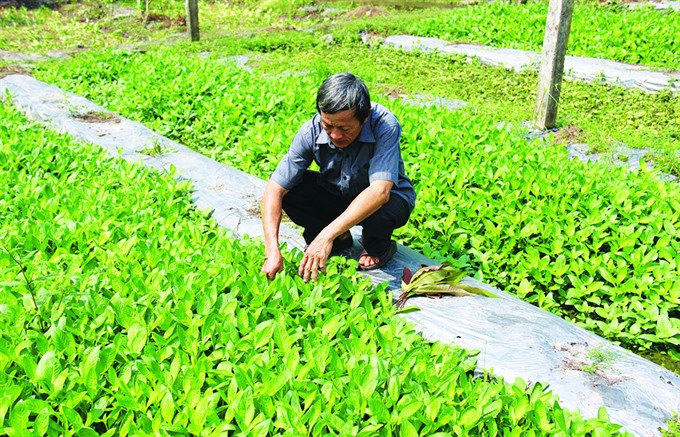 Society
Society

" />Wild vegetables, herbs and leaves from trees planted on the banks of the Sài Gòn and Vàm Cỏ rivers in Tây Ninh Province’s Trảng Bàng District are known by their taste, smell and use in bánh tráng phơi sương (dew-soaked rice paper), boiled meat dishes, and fish sauce.
 |
| The garden of Lê Văn Dĩ in Tây Ninh Province’s Trảng Bàng District. — Photo https://baotayninh.vn |
TÂY NINH — Wild vegetables, herbs and leaves from trees planted on the banks of the Sài Gòn and Vàm Cỏ rivers in Tây Ninh Province’s Trảng Bàng District are known by their taste, smell and use in bánh tráng phơi sương (dew-soaked rice paper), boiled meat dishes, and fish sauce.
However, because of industrialisation, including many new factories and industrial parks, wild vegetables and herbs are disappearing.
Recognising the risk, six years ago, Lê Văn Dĩ, 54, of Gia Lộc Commune in the district took cuttings of many of the vegetables, herbs and trees growing along the two river banks to plant in his one-hectare garden.
“I have 13 kinds of plants, including trâm ổi (Lantana camara), trâm sắn (Syzygium cinereum) and others,” Dĩ said.
Dĩ’s garden is the first to meet VietGap standards in the province. “I earn nearly VNĐ200 million (US$8,575) each year from the garden.”
Many people in the village have learned growing techniques from him and have planted similar herbs and vegetables.
In 2016, the Gia Lộc Commune’s Farmers’ Association and agricultural division under the People’s Committee in Trảng Bàng District encouraged Dĩ and five households with gardens to set up a co-operative team growing naturalised vegetables, herbs and trees.
The team’s total growing areas covers 1.8ha and provides 15 kinds of vegetable, herbs, and tree leaves to the market.
The team’s products, which have VietGap certificates, are distributed in the province and neighbouring localities, including HCM City.
The team has signed purchase contracts with companies and supermarkets in Trảng Bàng District and HCM City.
Phan Văn Tấn, vice chairman of the commune’s People’s Committee, said the formation of such teams ensures that naturalised plants will survive for years.
“Local authorities will encourage more residents to expand growing like Dĩ, so the plants can have a sustainable life,” Tấn said.
Other residents in the district have followed the model and are now planting these herbs, trees and vegetables for use in cooking.
The Otaheite apple tree, for example, has leaves which give a sour taste, while leaves from black currant trees have an acrid taste.
The dishes made with these leaves, which are named Bánh Tráng Trảng Bàng (a typical rice paper), are offered to tourists who visit a historical site in Trảng Bàng District.
The leaves are also sold at many well-known restaurants in HCM City, attracting many locals and tourists.
The vegetables and herbs are used in bánh canh (rice noodle soup) and bánh xèo (rice flour pancake stuffed with shrimp, pork and bean sprouts). — VNS